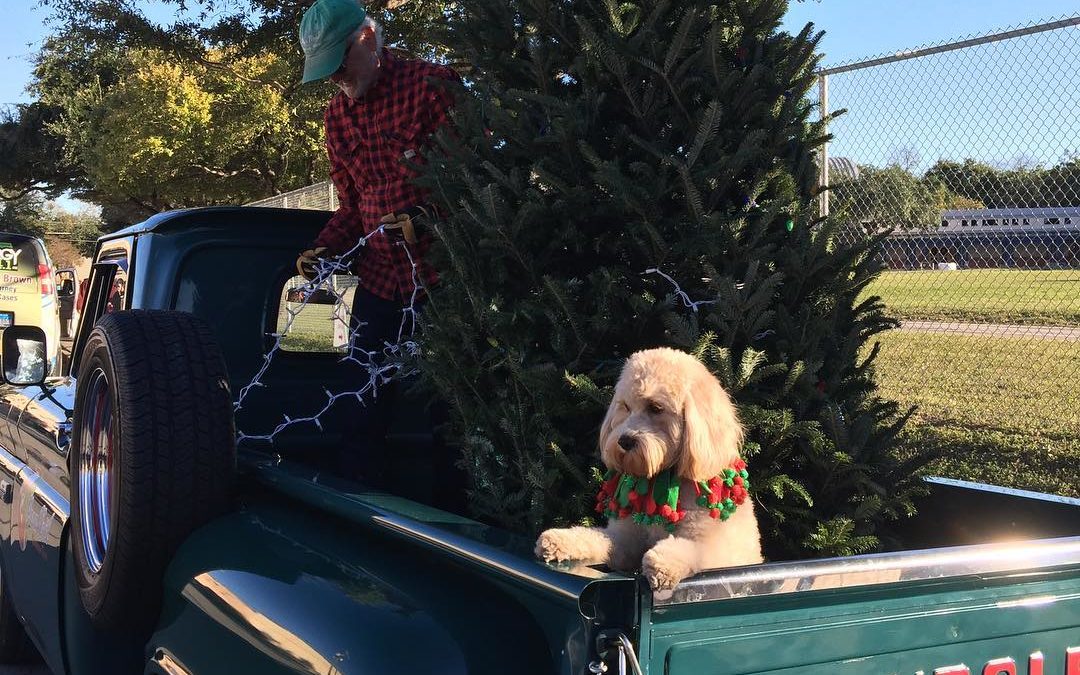Fake Christmas trees are NOT better for the environment! 85% of fake trees are imported from China and are made of metals and plastics that contain PVCs. Because of the unacceptable levels of lead, California requires that they carry a warning label.
Myths about Christmas Trees
From the National Christmas Tree Association
MYTH #1: Real Christmas Trees deplete our forests.
BUSTED: Seriously, do people still believe this? To be completely accurate, in a few locations around North America, the Forest Service sells permits for people to harvest wild trees so that they can create fire breaks. Commercial Christmas trees (nearly half a billion) grow on family farms; each spring growers plant one to three seedlings for each tree harvested.
MYTH #2: Real Christmas Trees aggravate allergies.
BUSTED: A person may be allergic to tree pollen or even tree sap, but a real tree produces pollen in the spring, not in the fall and winter when it is dormant. Studies show that of the 50,000 species of trees, less than 100 have been shown to cause allergies.
Christmas trees can collect pollens, dust, mold or other allergens as they grow. Of course, so can the artificial tree stored in the attic or basement. Whether you use a fresh Christmas tree from a farm, or an artificial tree stored in a box, if you are sensitive to dust or molds, you can simply hose the tree with water and let it dry before bringing indoors. At Papa Noel, we use a shaker to help remove allergens and dead needles so these don’t end up in your home!
Resources pertaining to holiday allergy prevention include:www.aaaai.org/media/news_releases/2004/11/111204.stm
www.hoptechno.com/book46.htm
MYTH #3: Fake trees can be re-used it each year.
BUSTED: Whether you use a fake tree for the average 6-9 years or 20 years, it will end up in a landfill. Real trees are biodegradable and recyclable and during their years on farms, they actually support the environment.
MYTH #4: Christmas trees are a fire safety hazard and frequently catch on fire.
BUSTED: The reality is, a tree being accidentally ignited is EXTREMELY rare because they are rich in sap and water. As in 0.0004%. According to a report from the National Fire Protection Association, 28% of home fires involving a Christmas tree were started with fake trees.
MYTH #5: Real Trees cost too much.
BUSTED: You will find a wide range of prices for the size you want. If I spend $20 on a Christmas tree from a farm each year and you spend $300 on a fake tree, you’d have to use it for 15 years (way past the average) before I will have spent the same amount as you.
MYTH #6: Real Christmas Trees have pesticides and chemicals on them.
BUSTED: Myths such as this often get a foothold due to the disconnect that most people have with agricultural practices. Christmas tree farmers do not use chemicals in a “harmful” manner. Chemicals are used only when needed and only according to the specified instructions and regulations of the EPA, the USDA and the FDA. Christmas tree farmers live on their land and raise their families there. They would not engage in an activity that would put their families, employees or the people they sell their product to in harms way. To suggest otherwise is at best uninformed, and at worst, offensive.
There has never been a scientific research article suggesting that harmful levels of chemical residue exists on Christmas Trees, and in fact there have been studies looking for it. On the flip side, there have been studies showing a potential health danger of lead dust coming from plastic trees. The state of California requires a warning label on fake trees and wreaths. Watch this clip
MYTH #7: Real Christmas Trees end up in landfills.
BUSTED: Christmas tree recycling programs are available nationwide, and many are quite creative. A farm-grown Christmas tree is 100% biodegradable, so it can be used for all kinds of things in nature, from mulch to erosion control.
MYTH #8: Real Christmas Trees are a hassle and a mess.
BUSTED: It’s all relative. You may have to vacuum some needles. Does that mean you don’t vacuum normally? Vacuuming should be a regular household chore all year long, so if the tree drops some needles, you’re going to vacuum anyway right?
The time invested in buying and maintaining a farm-grown Christmas tree is nothing compared to what you get out of it. A good feeling. Memories. A home that “smells” like Christmas. Knowledge that you made a good environmental choice. That’s not a hassle, that’s a blessing.


Recent Comments